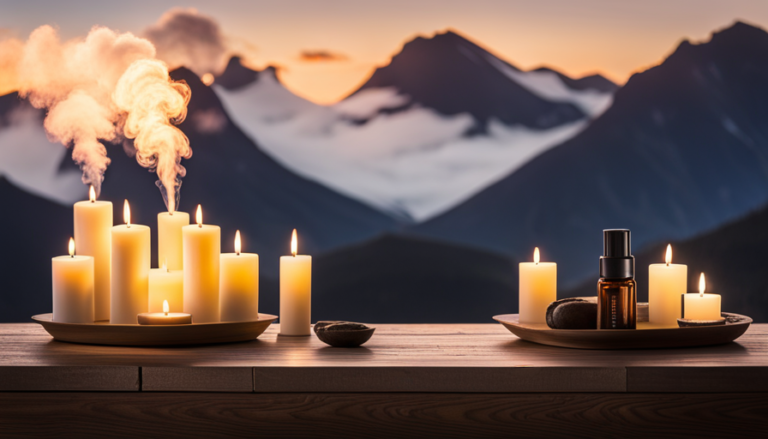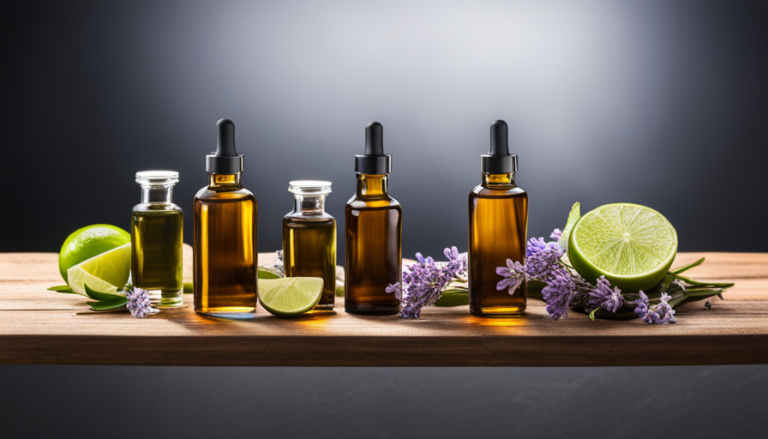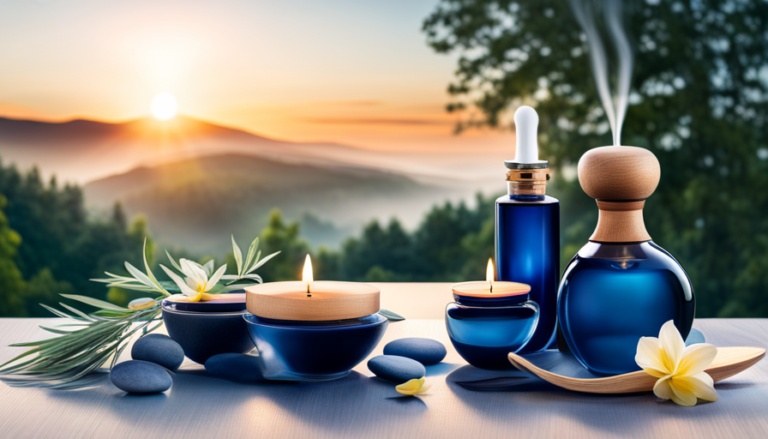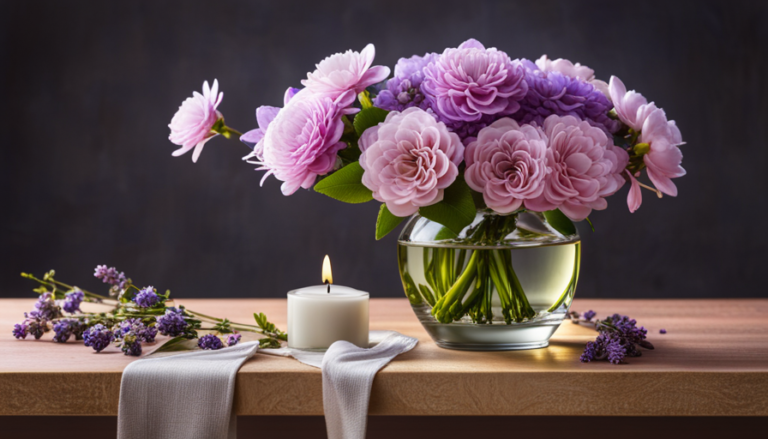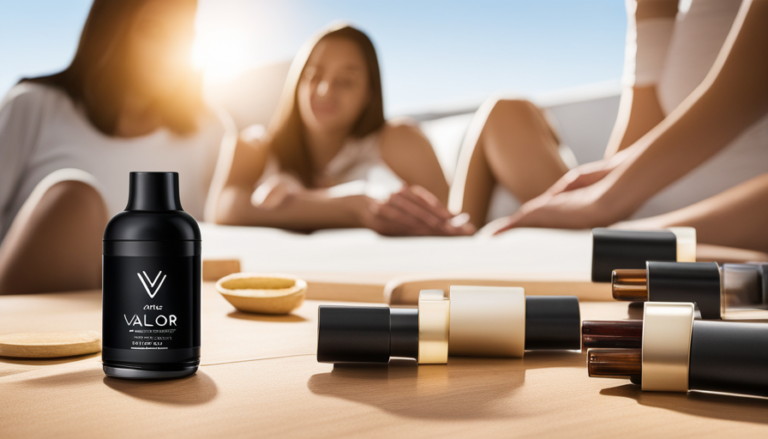How Much Essential Oil To Add To Soap
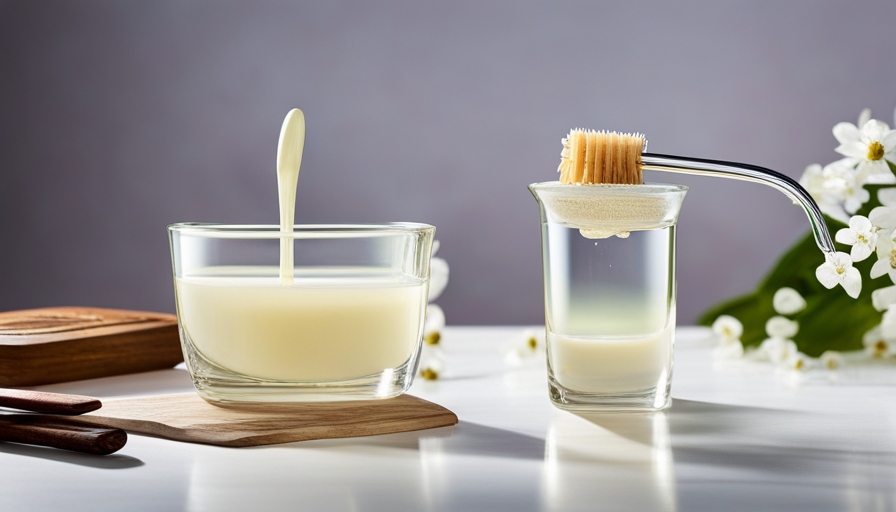
Are you ready to dive into the world of soap-making? Adding essential oils to your homemade soaps can elevate their scent and provide some fantastic benefits for your skin. But how much should you add?
Finding the perfect concentration can be a bit tricky, but fear not! In this informative article, we will guide you through the process step by step. From understanding concentration guidelines to conducting patch tests, we’ve got you covered.
Let’s start creating beautifully scented soaps that are just right for you!
Key Takeaways
- Essential oils should be used in a maximum concentration of 3% per total weight of soap to avoid skin irritation or allergic reactions.
- Diluting the essential oil with a carrier oil before adding it to the soap can reduce potential risks.
- Patch testing on a small area of skin helps identify potential adverse reactions and minimize the risk of allergic reactions.
- Seeking feedback from individuals with different skin types helps determine if the soap works well for everyone and allows for personalized recommendations.
Understand the Concentration Guidelines
It’s important to understand the concentration guidelines when determining how much essential oil to add to soap. Personal safety should always be a top priority, and following dilution ratios is crucial.
Essential oils are highly concentrated substances that can cause skin irritation or allergic reactions if used in excessive amounts. To ensure a safe and enjoyable experience, it is recommended to use a maximum of 3% essential oil per total weight of soap. This means that for every 100 grams of soap base, you should add no more than 3 grams of essential oil.
Diluting the essential oil with a carrier oil before adding it to the soap can also help reduce any potential risks.
Now let’s consider personal preference and desired intensity in the next section.
Consider Personal Preference and Desired Intensity
To achieve your desired level of intensity, you can adjust the amount of essential oil you include in your soap recipe. The personal fragrance and aromatherapy benefits of essential oils make them a popular choice for soap making.
When determining how much essential oil to add, it’s important to consider your personal preference and the desired intensity of the scent. Some people prefer a subtle hint of fragrance, while others enjoy a stronger aroma.
Start by adding a small amount of essential oil and gradually increase until you reach your desired level of scent. Remember that different oils have different strengths, so it may take some experimentation to find the perfect balance.
By considering personal preference and adjusting as needed, you can create a soap with just the right amount of essential oil for an enjoyable experience.
Start with a Small Amount and Adjust as Needed
Begin with a small amount of fragrance and adjust as necessary to achieve your desired scent intensity in the soap. Here are four steps to guide you through the process:
-
Experiment with different oils: Each essential oil has its own unique scent profile, so try combining different oils to create your desired fragrance. Start with just a few drops and gradually increase the amount until you reach the desired level of aroma.
-
Consult with a professional aromatherapist: If you’re unsure about which oils to use or how much to add, it’s always a good idea to seek advice from an expert. A professional aromatherapist can provide guidance based on your preferences and specific needs.
-
Take note of the soap base and additional ingredients: Different soap bases and additives may affect how the fragrance interacts with the soap. Keep track of any changes in scent intensity when using different combinations of ingredients.
-
Adjust as needed: Remember, finding the perfect balance is all about trial and error. Keep experimenting until you achieve your ideal scent intensity for that luxurious bathing experience.
Now let’s move on to understanding how taking note of the soap base and additional ingredients can further enhance your scented soap creation without overpowering it entirely.
Take Note of the Soap Base and Additional Ingredients
When making scented soap, it’s important to consider the type of soap base and any additional ingredients you plan to use. Different soap bases have varying properties that can affect the overall scent and performance of your soap. For example, a glycerin-based soap will have a different texture and lather compared to a goat milk soap or an olive oil soap. Each soap base option offers unique benefits and considerations when adding essential oils.
Additionally, take into account any additional ingredients such as botanicals or exfoliants, as they can also impact the scent intensity and longevity. Essential oils are highly concentrated, so start with a small amount and adjust as needed to achieve your desired fragrance strength.
It’s important to conduct a patch test and seek feedback from others before finalizing your recipe to ensure it is safe for use on the skin. This step will help you determine if your chosen essential oil concentration is suitable for all skin types.
Conduct a Patch Test and Seek Feedback from Others
Before proceeding with your scented soap recipe, it is crucial to conduct a patch test and get feedback from others to ensure its suitability for all skin types. This step is essential because different individuals may have varying reactions to certain ingredients or fragrances in the soap.
Here are four important reasons why you should conduct a patch test and seek feedback before mass-producing your scented soap:
-
Avoid allergic reactions: Some people may be sensitive or allergic to specific essential oils or other additives in your soap. By conducting a patch test on a small area of skin, you can identify any potential adverse reactions before using the soap on larger areas.
-
Ensure compatibility with all skin types: Different individuals have different skin types, ranging from dry to oily, sensitive to normal. Seeking feedback from others who represent various skin types will help you determine if the scented soap works well for everyone.
-
Seek professional advice: Consulting with dermatologists, skincare experts, or professionals in the field can provide valuable insights into the safety and effectiveness of your scented soap recipe.
-
Improve product quality: Feedback from others can help you fine-tune your formula by identifying any issues or improvements needed, ensuring that your final product meets high-quality standards.
By following these steps, you can create a scented soap that is safe and suitable for all skin types while minimizing the risk of allergic reactions.
Conclusion
In conclusion, adding essential oil to soap requires careful consideration and experimentation. By following concentration guidelines and considering personal preference, you can create a soap with the desired intensity of fragrance.
Starting with a small amount and adjusting as needed is key to achieving the perfect balance. It’s also important to take note of the soap base and additional ingredients, as they can affect the scent.
Lastly, conducting a patch test and seeking feedback from others will ensure that your soap is well-received. Remember, like a skilled perfumer blending notes in the air, finding the right amount of essential oil for your soap is an art worth mastering.

